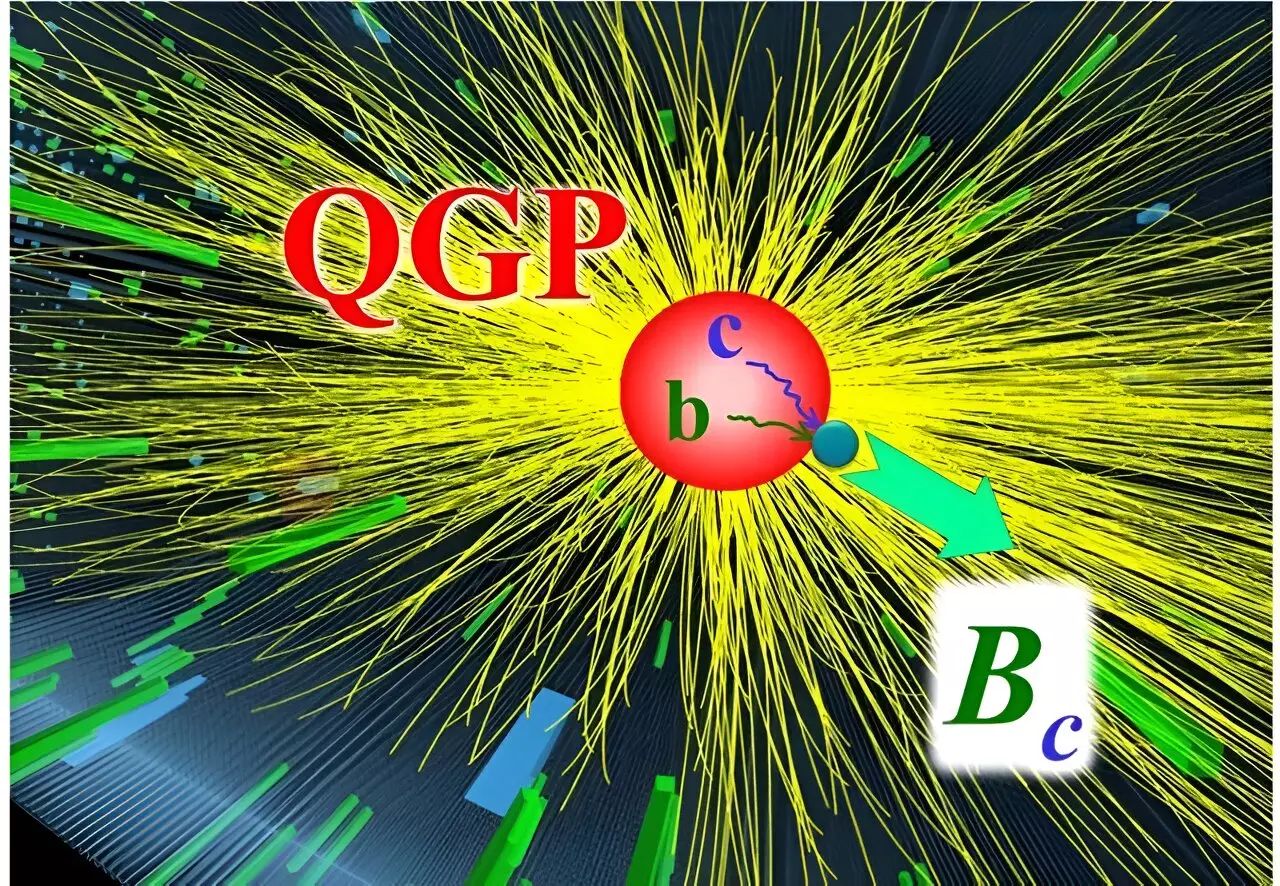The HEFTY Topical Collaboration recently conducted research on the recombination of charm and bottom quarks into Bc mesons within the quark-gluon plasma (QGP). This study utilized a transport model to simulate the dynamics of heavy-quark bound states as they traverse the expanding QGP fireball generated in high-energy heavy-ion collisions. The findings of this investigation were published in the journal Physical Review C.
Signature of QGP Formation
In high-energy heavy-ion collisions, the QGP exists for a brief period before decaying into numerous observable particles. By analyzing the signatures produced by specific particles, researchers can identify the presence of the QGP. These signatures are distinct from those observed in other types of collisions, such as proton-proton interactions. Through theoretical simulations, the researchers demonstrated that the recombination of charm and bottom quarks leads to increased production of Bc mesons, serving as a unique signature of QGP formation.
The study revealed that the fusion of charm and bottom quarks within the QGP significantly boosts the yield of Bc mesons. This phenomenon is absent in proton-proton collisions, making it a valuable indicator of the QGP’s presence. By incorporating realistic spectra of charm and bottom quarks into their calculations, the researchers were able to quantify the impact of recombination processes on Bc meson production. The results indicated a pronounced enhancement of Bc meson yield in lead (Pb) nucleus collisions compared to proton collisions.
Theoretical predictions regarding the behavior of slow-moving Bc mesons in head-on collisions of Pb nuclei aligned with data from the CMS collaboration at the Large Hadron Collider. While the current data may not be sensitive enough to capture the characteristics of slow-moving Bc mesons, future observations are expected to provide a robust test of the QGP signature identified in this study.
The research conducted by the HEFTY Topical Collaboration sheds light on the recombination of quarks in the QGP and its implications for the production of Bc mesons. By leveraging theoretical simulations and experimental data, the study offers valuable insights into the behavior of heavy-quark bound states in high-energy heavy-ion collisions. The identification of unique signatures associated with QGP formation opens up new avenues for understanding the fundamental properties of nuclear matter under extreme conditions.


Leave a Reply